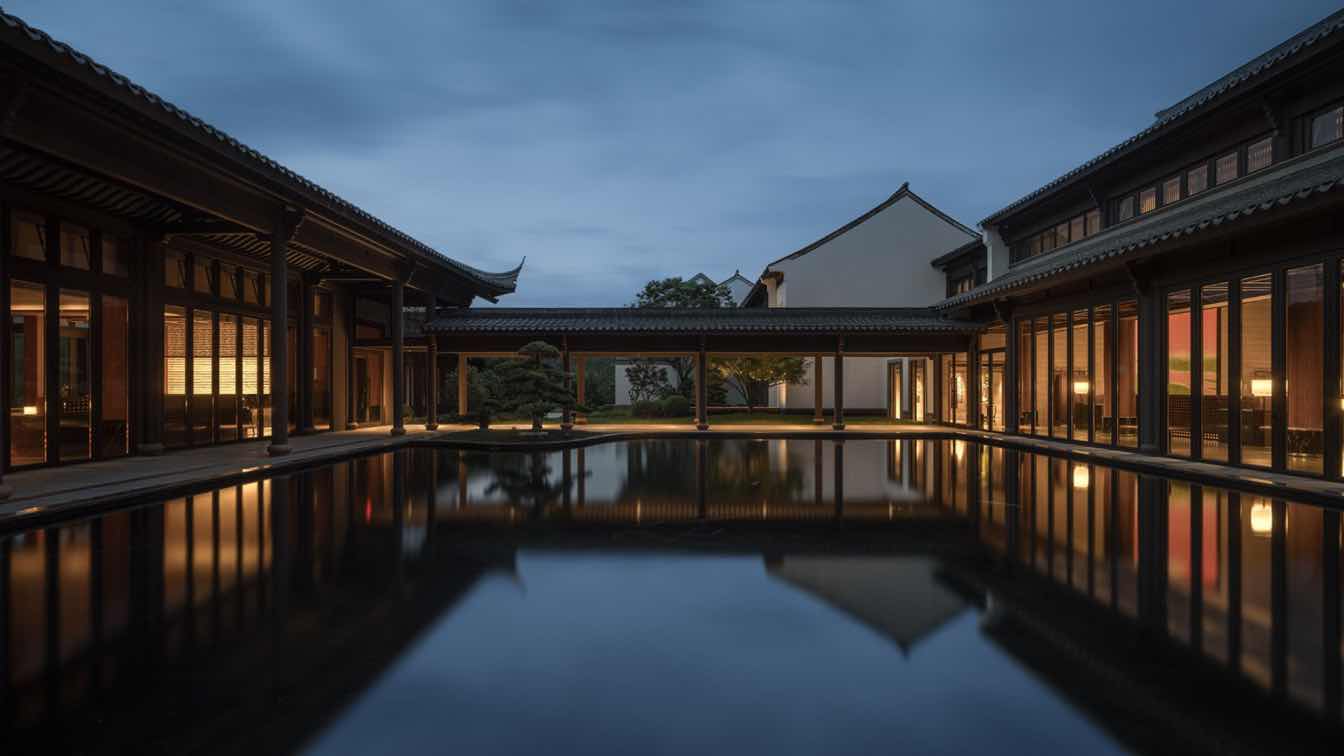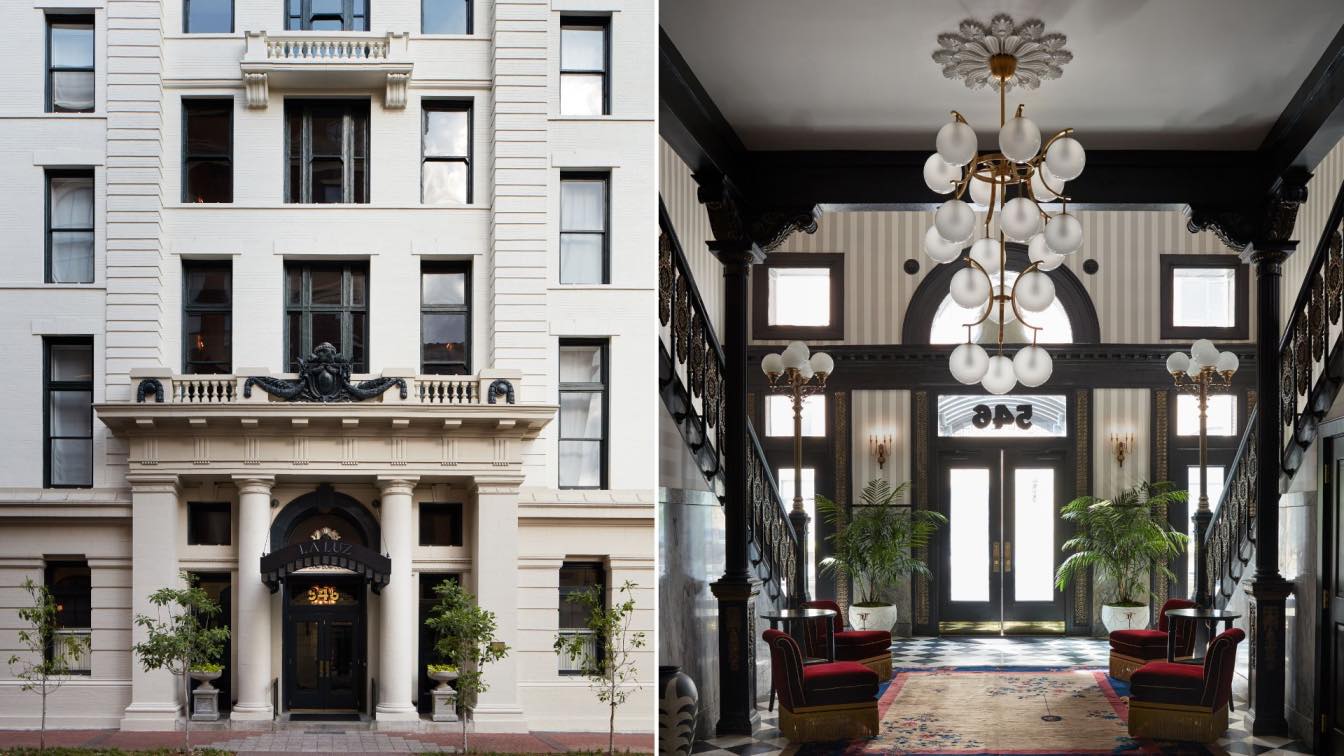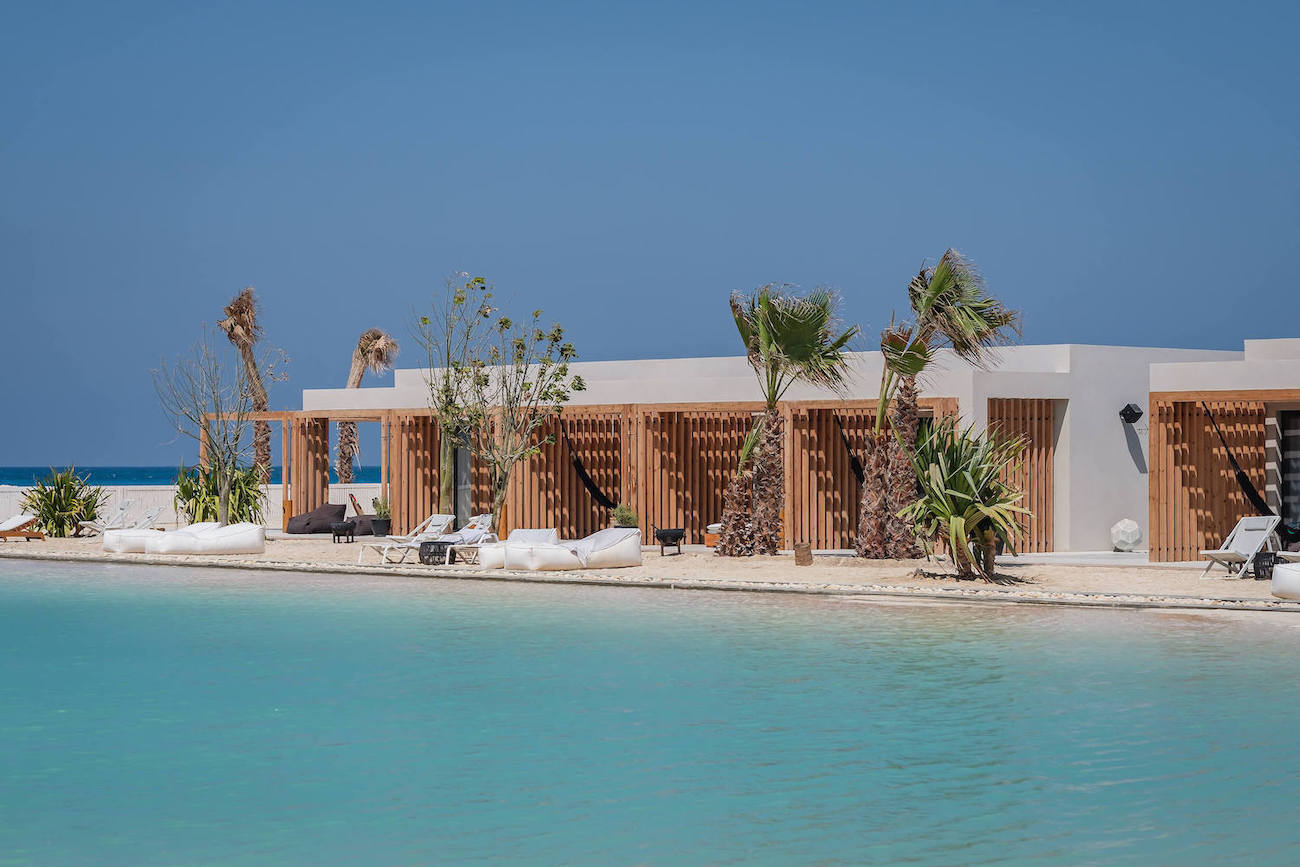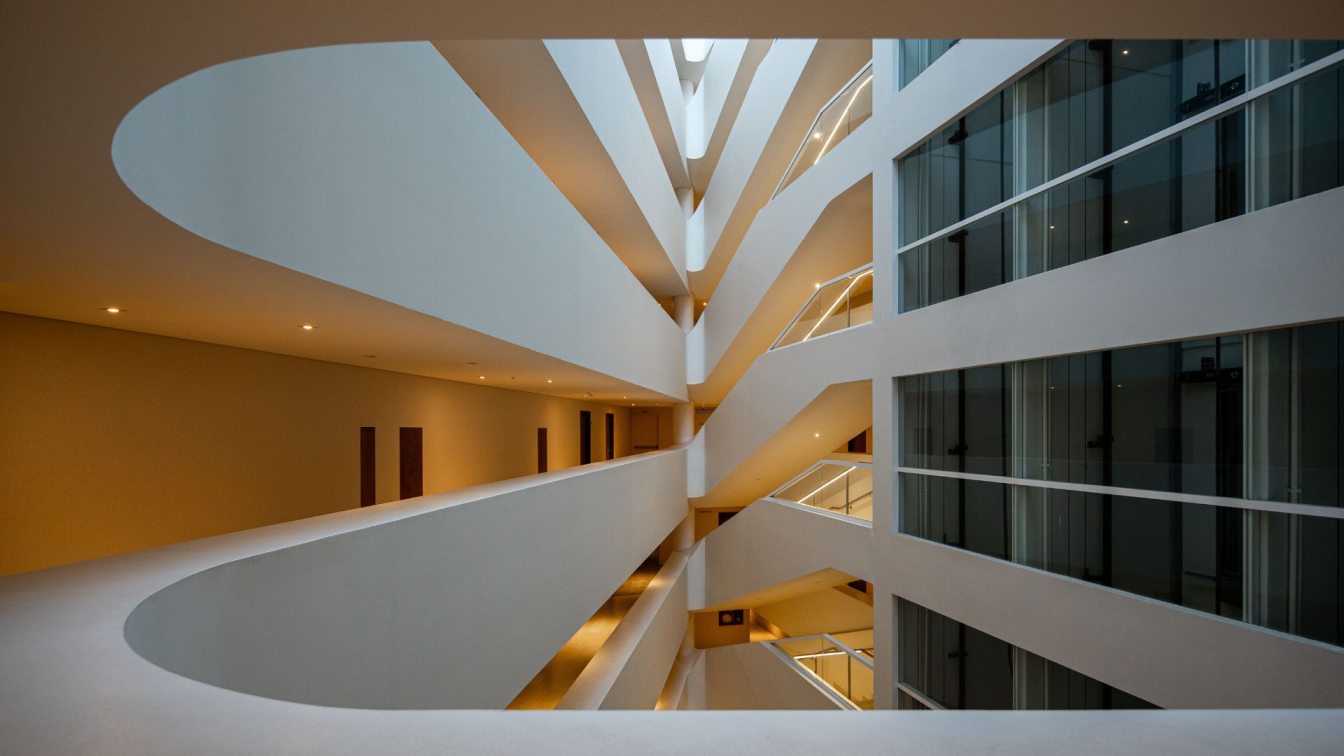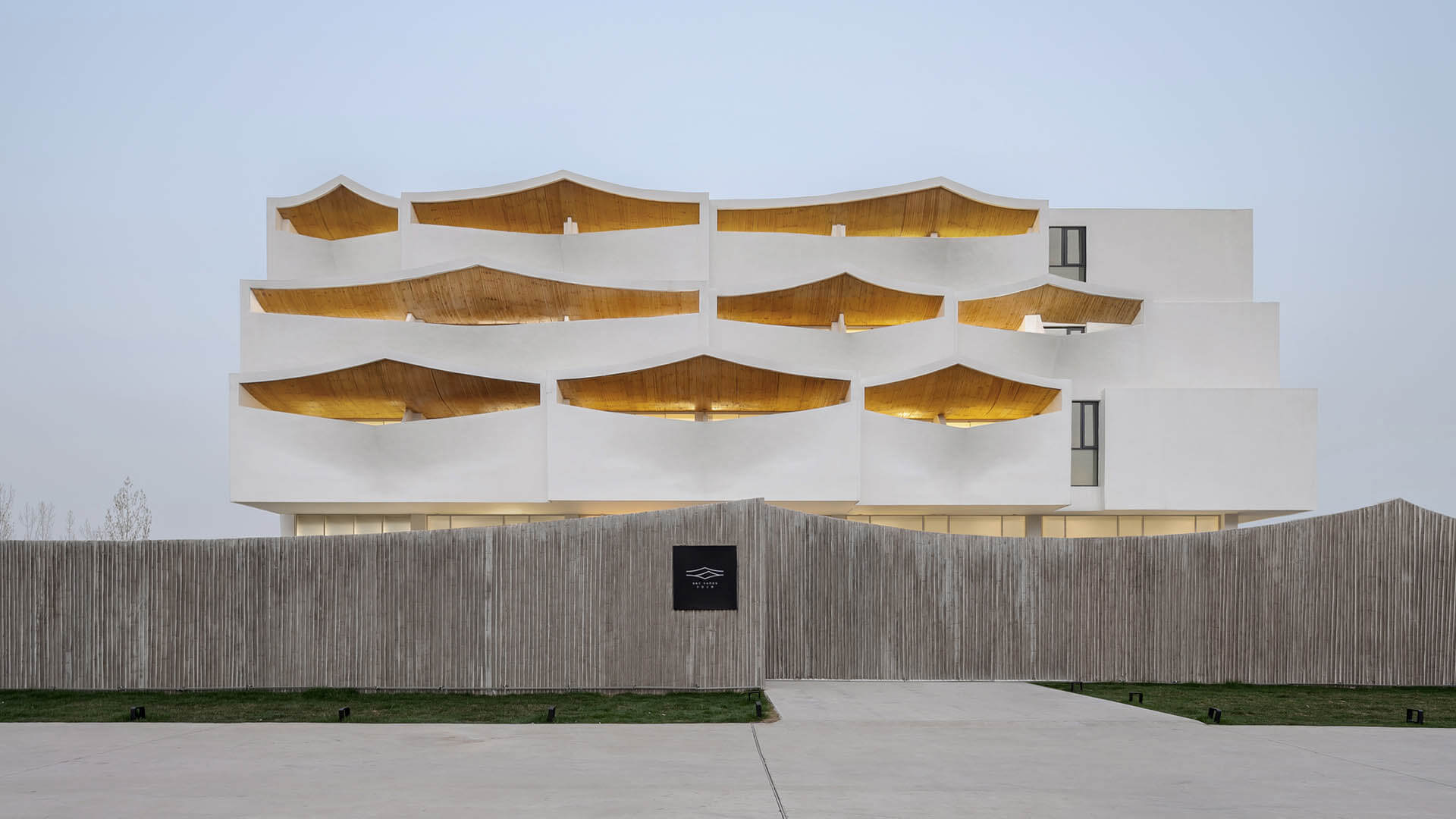Nestled within a serene corner of Dongshan Mountain, the project is bordered by Ma'ao Lake to the east and Cao'e River to the west.
Starting from Dongshan, where the wind rises, dreams beckon.
Origin
An Extraordinary Debut for a Crossover Hotelier
Entrusted by CHUNHUI GROUP and ROAMING DONGSHAN, RONG DESIGN imagined the interiors of GRAND DONGSHAN, a resort hotel located in Shangyu, Shaoxing. From the outset, RONG DESIGN engaged closely with ROAMING DONGSHAN to refine the hotel's positioning, operational logic, and brand identity, ensuring a shared vision.
To establish the hotel as a one-of-a-kind destination resort, RONG DESIGN and the hotel team delved into market dynamics, customer demographics, and a profound exploration of the local cultural context.
Embracing Simplicity Over Adornment
Rhythms
Addressing the spiritual and cultural aspirations of the hotel's target clientele, the design team faced a critical challenge: how to honor the building's original form while striking a harmonious balance between local cultural heritage and modern aesthetics, all within the constraints of time.
The poetic reflections of Xie Lingyun, whose masterpiece Fu on Dwelling in the Mountains celebrates the secluded life in Dongshan Mountain, serve as a timeless bond linking ancient and modern lifestyles. A verse in the poem conveys a philosophy of embracing simplicity over adornment. This timeless ethos perfectly resonates with the project's core vision, becoming the guiding philosophy for the design team.

Between Inside and Outside, a Realm of Serenity
The visual expression of "embracing simplicity over adornment" evolves into an emotional resonance triggered by rhythm. From the purity of architecture and interior, to the continuity of indoor and outdoor scenes, and the orderliness of furniture systems and objects, the design explores the symbiotic relationships between people and objects, objects and space, and space and the environment. Here, boundaries become mediums.
The public areas, particularly the hotel lobby, draw inspiration from the symmetry of classical Chinese garden courtyards. Facing the tranquil lake, the lobby bar is framed by a soaring atrium, amplifying a sense of openness and dramatic tension that aligns with architectural facades.
Balancing enclosure with openness, the design meets both functional and aesthetic needs. The architectural layout extends into a north-south symmetry, with the southern area accommodating a lively bar and the northern area dedicated to an afternoon tea lounge. This spatial arrangement fosters a tranquil and welcoming ambiance.
Natural light acts as a vital medium connecting the interior and exterior. Mottled sunlight streams through grille-pattern glass and wooden windows, portraying a picture of vitality.
In the central lobby area, floral arrangements displaying the four seasons take center stage. Modular blocks are seamlessly integrated, interpenetrated, separated, and layered, transforming fragmented spaces into a cohesive whole. Paired with orderly arrays of cubic lights, these elements unify the interior and exterior environments, inviting guests to immerse themselves in the beauty of the surrounding mountain and lake scenery.
The Chinese restaurant employs translucent and partially see-through elements to evoke a sense of fluidity and spatial layering, reminiscent of a meandering garden with winding paths and unfolding vistas.

Large and small woodwork
The guest rooms, facing the lake, continue the simplicity of the public areas. Embroidered wall paintings inspired by ancient local official attire imbue the space with an understated artistic charm. Elegant wooden accents echo the natural poetry of Dongshan, creating a sanctuary of tranquil leisure amidst the mountain landscape.
Symbiosis of Points and Lines: Seeing the Big in the Small
The geometric harmony of triangles and circles, combined with modular relationships, unfolds through the interplay of points and lines, a palette of calm tones, minimalist forms, refined details, and natural materials—bamboo, rattan, wood, and leather. This creates a cohesive order of objects and furniture systems while reflecting the design team's nuanced exploration and reinterpretation of traditional cultural heritage.
Language construction in details.
"Lines" represent fixed furniture pieces, deconstructed and reimagined to fulfill both aesthetic and functional roles. Screens, couches, racks, and lamps merge in a linear arrangement, allowing the space to grow organically.
The essence of furniture transcends beyond its physical presence as items; it resides in the emotional resonance and spatial context it creates.
Simple furnishings, along with timeless artifacts, create a contrast of contemporary aesthetics and ancient Oriental elegance. As light and shadow delicately sweep through, the unadorned space embraces the authenticity of life, exuding subtle warmth and understated elegance.
"Points" encompass the movable furniture designed for optimal comfort and practicality. These pieces—tables, chairs, desks, beds, stools, and more—reveal clear relationships of insertion, support, binding, and weaving. Together with the fixed furniture, they cohesively realize the functional essence of the space.
From the architectural purity to the seamless integration of interior and exterior spaces, and the orderly interplay of furniture and objects, the design embodies human-centric care. It fosters a harmonious dialogue between past and present, blending contemporary aesthetics with timeless cultural heritage to create a space of symbiotic elegance.
To behold Dongshan is to not only admire the beauty of nature, but also reflect on the essence of life and explore the depths of the inner self.






























